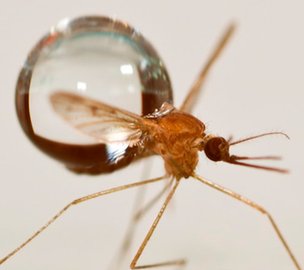“Smart” insulins, which are undergoing trials, could revolutionize the way diabetes is managed, scientists say.
Instead of repeated blood tests and injections throughout the day to keep blood sugar in check, a single dose of smart insulin would keep circulating in the body and turn on when needed.
Animal studies show the technology appears to work – at least in mice.
Scientists plan to move to human trials soon, PNAS journal reports.
Experts caution that it will take years of testing before treatments could become a reality for patients.
People with type 1 diabetes, who either do not make or cannot use their own natural insulin, rely on insulin injections to stay well.
Without these, their blood sugar would get dangerously high.
In the same time injecting insulin can also make blood sugar levels dip too low, and people with type 1 diabetes must regularly check their blood glucose levels to make sure they are in the right zone.
Diabetes experts have been searching for ways to make blood sugar control easier and more convenient for patients, which is where “smart” insulins come in.
There are a few different types in development, but all are designed to automatically activate when blood sugar gets too high and switch off again when it returns to normal.
Dr. Danny Chou from the Massachusetts Institute of Technology (MIT) has been testing a smart insulin that he and his colleagues developed in the lab.
It is a chemically modified version of regular, long-acting insulin.
It has an extra set of molecules stuck on the end that binds it to proteins that circulate in the bloodstream. While it is attached to these, the smart insulin is in its switched off mode.
When blood sugar rises, the smart insulin switches on – glucose locks on to the smart insulin and tells it to get to work.
Dr. Danny Chou said: “My goal is to make life easier and safer for diabetics.
“This is an important advance in insulin therapy.”
The Juvenile Diabetes Research Foundation (JDRF) has been funding work into smart insulins.
[youtube j_2vhGDzvuM 650]
Scientists have found that mosquito’s tiny, low-weight body, is the key to its ability to survive flying in the rain.
A team from the Georgia Institute of Technology filmed the insects as they collided with raindrops.
This showed that their bodies put up so little resistance that, rather than the drop of water stopping in a sudden, catastrophic splash, the mosquito simply combined with the drop and the two continued to fall together.
The team reports their findings in PNAS.

Scientists have found that mosquito's tiny, low-weight body, is the key to its ability to survive flying in the rain
As well as helping explain how the insects thrive in damp, humid environments, the research could ultimately help researchers to design tiny, flying robots that are just as impervious to the elements.
“I hope this will make people think a little bit differently about rain,” said lead researcher David Hu.
“If you’re small, it can be very dangerous. But it seems that these mosquitoes are so small that they’re safe.”
Dr. David Hu is interested in understanding completely the “tricks” that insects use to survive being so small.
After repeated attempts at what he described as the most difficult game of darts ever, he and his colleagues managed to hit flying mosquitoes with drops of water and capture footage of the result.
Each droplet was between two and 50 times the weight of a mosquito, so what they saw surprised them.
Describing the results, Dr. David Hu cited the Chinese martial art of Tai chi.
“There is a philosophy that if you don’t resist the force of your opponent, you won’t feel it,” he explained.
“That’s why they don’t feel the force; they simply join the drop, become one item and travel together.”
When a moving object crashes into another, it is the sudden halt that produces a damage-causing force. For example, when a car hits a wall at 30 mph, the stationary wall and the car have to absorb all of the energy carried by that moving car, causing a great deal of damage.
The trick for a mosquito is that it hardly slows the raindrop down at all, and absorbs very little of its energy.
Surviving the collision though, is not the end of the drama for a tiny insect. It has to escape from its watery cocoon before the droplet smashes the insect into the ground at more than 20 mph.
This is where the insect’s body, which is covered in water-repellent hairs, seems to give it another crucial survival technique.
Every mosquito studied in this experiment managed to separate itself from the water drop before it hit the ground.


